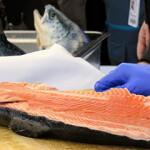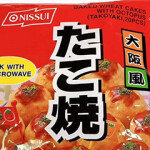Cod stocks creep back up for Gulf of Alaska, but remain down for Bering Sea, Aleutian Islands

Pacific cod stocks have begun to rebound in the Gulf of Alaska, but the total allowable catch (TAC) for 2021 remains low at 17,321 metric tons. Last year, managers curtailed the fishery in federally managed waters after stock assessments put the biomass near the bottom of the threshold for conducting the fishery.
Though recruitment of younger cod and uncaught fish from last year have added to the abundance in most recent assessments, full recovery of the stock could take years. The warm-water "blob" of 2014 has been blamed for the crash.
The warming waters began in 2013, and precipitated a 79 percent decline in the stocks. Prevalent theories suggest that warmer waters raise the metabolic rates for the young cod. At the same time, the forage species for young cod appeared to have higher concentrations of protein and lower concentrations of fat. More recent studies determined that the eggs of cod survive in a narrow range of temperature (3 to 6 degrees Celsius, or 37.4 to 42.8 degrees Fahrenheit).
Stocks also continue to decline in the Bering Sea and Aleutian Islands harvest areas. The 2021 TAC for the Bering Sea has been set at 111,380 metric tons, with a TAC of 13,796 metric tons for the Aleutian Islands.
The 2020 TACs for the respective areas had been set at 141,799 metric tons and 14,214 metric tons.
As for this year’s harvest, the cod and pollock fleets got off to a rocky start after COVID-19 cases caused the intermittent closure of large processing plants in Dutch Harbor and Akutan. In state-managed waters, the Alaska Department of Fish and Game reported that the pot fleet had landed 1.89 million pounds, slightly over their 2020 TAC of 1.88 million pounds. Most of the early-season effort took place in the waters near Kodiak.
“Fishing in February was pretty middle of the road, neither fast nor slow,” Nathaniel Nichols, an area management biologist in Kodiak, said. “There was a good mix of fish size reported from vessels. Average weights were a little higher than usual.”
According to the ex-vessel value database NMFS uses in determining fees for observer coverage, prices ranged from USD 0.35 to USD 0.39 (EUR 0.29 to EUR 0.33) per pound going into 2021. Dockside deliveries to processors in Kodiak during February ranged from USD 0.30 to USD 0.55 (EUR 0.25 to EUR 0.46) per pound, depending on size and quality.
Reporting by Charlie Ess
Photo courtesy of Max Lindenthaler/Shutterstock






Share